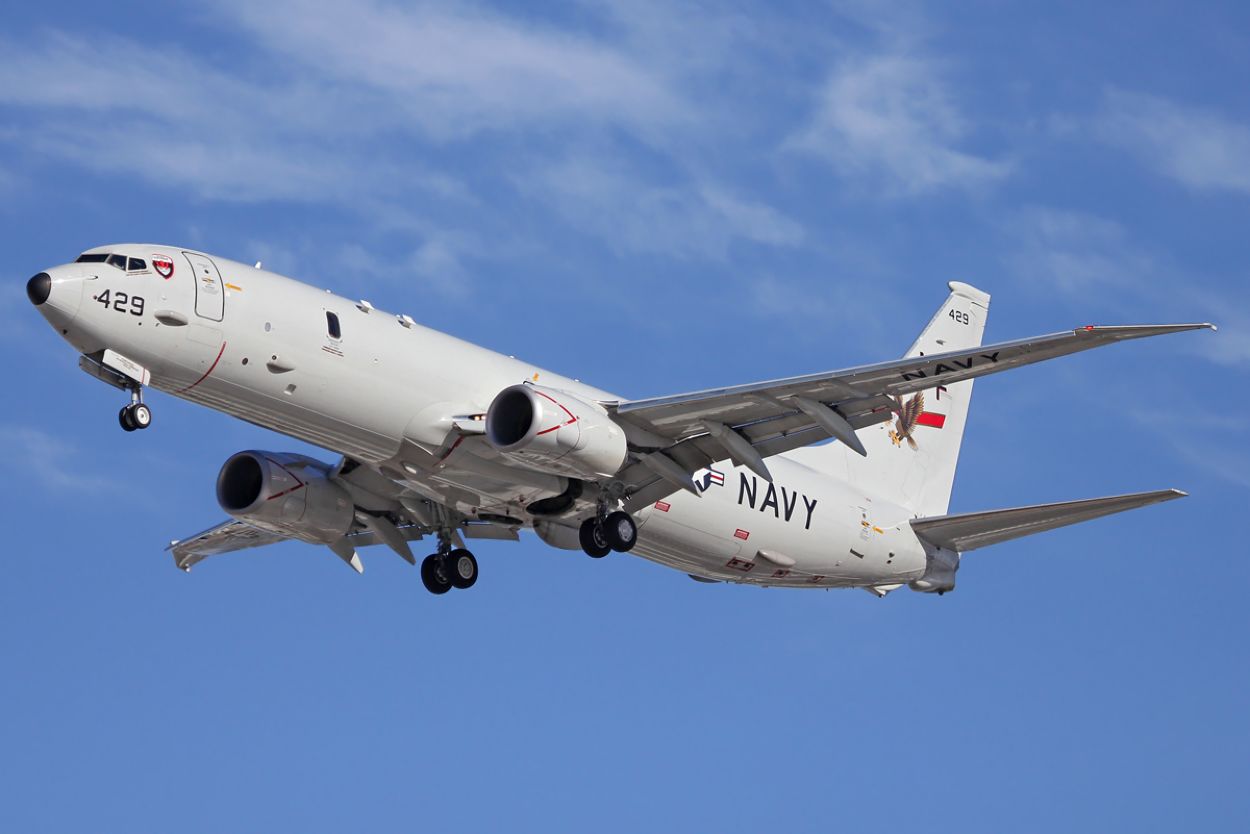Days after a Pentagon report warned of a burgeoning threat by China’s expanding submarine fleet, the United States and its AUKUS allies Australia and the United Kingdom have decided to take the help of Artificial Intelligence (AI) for tracking Chinese submarines in the Pacific.
The defense chiefs of the US, UK, and Australia stated on December 1 that crews operating US Navy top maritime surveillance and attack aircraft, the P-8 Poseidon, on Pacific operations will leverage artificial intelligence (AI) algorithms to swiftly interpret sonar data collected by underwater devices from all three countries.
As the allies look for ways to counteract the effects of China’s rapid military modernization and growing global assertiveness, the technology may allow them to detect Chinese submarines more quickly and accurately.
A joint statement from US Secretary of Defence Lloyd Austin, Australian Defence Minister Richard Marles, and UK Secretary of State for Defence Grant Shapps read: “These joint advances will allow for timely high-volume data exploitation, improving our anti-submarine warfare capabilities.”
All three AUKUS allies fly the Boeing Company’s P-8 Poseidon naval aircraft. The warplane routinely patrols the Pacific, including the South China Sea, and is occasionally harassed by Chinese aircraft, as previously reported on several occasions by EurAsian Times.
The Poseidon has cruise missiles and torpedoes to attack submarines and surface ships. However, aircraft operations would become more robust and precise with the AI technology the partners are expected to explore in earnest.
The urgent need to innovate may be felt given that a US Pentagon report released in October this year said China’s submarine force will increase to 65 units by 2025 and 80 units by 2035. China is not only adding more conventional submarines to its arsenal, they are also more sophisticated and technologically advanced.
Chinese submarines are constantly receiving noise reduction technologies. The acoustic stealth of contemporary submarines is one of their most remarkable characteristics. Additionally, even though the quietness of the design is seldom disclosed, reports indicate that Chinese submarines are getting stealthier over the years.
The PLA-N currently operates six nuclear-powered ballistic missile submarines (SSBN), six nuclear-powered attack submarines (SSN), and 48 diesel-powered/air-independent powered attack submarines (SS). On its part, China’s military expansion in the Pacific is currently underway, with rising incidents of engagements with rivals.
The addition of patrol planes and helicopters that gather sonar data from underwater buoys has helped China’s People’s Liberation Army become more adept at locating enemy submarines. Underwater listening devices known as hydrophones can now be dovetailed to ships or submarines of China’s navy.
The latest AUKUS announcement comes two weeks after Australia accused a PLA warship of injuring some Australian divers when they were trying to clear fishing nets from their ship’s propellers. Although the divers received only minor injuries, the incident once again exposed the deep fissures between the two countries and put China under the limelight for being a threat to security in the region.
Australian officials labeled the incident “unsafe and unprofessional” as they unveiled new AUKUS initiatives. Defence Minister Richard Marles said, “It [the incident] highlights the need for this arrangement, and it highlights the need for speed in this arrangement, and I think you can see that speed.”
AUKUS Is Expanding Innovation & Collaboration
All the recent announcements in collaboration with AUKUS are part of US efforts to contain China. The AI-led submarine tracking comes under the extensive technology-sharing agreement known as AUKUS Pillar II.
The partnership’s first pillar, dedicated to enhancing Australia’s nuclear-powered submarine capacity, is to jointly construct a new submarine that will be deployed by 2040. The State Department said it had cleared a prospective foreign military sales case to Australia for different products and services related to AUKUS Pillar I, which is focused on transferring nuclear-powered submarines to Australia. The projected value of the possible transaction is US$2 billion.
In contrast, Pillar II focuses on eight technology domains: quantum technologies, sophisticated cybersecurity, and hypersonic weapons. “This effort will consist of a series of integrated trilateral activities aiming to enhance capability development and improve interoperability,” a senior US defense official told reporters ahead of the press conference. “
The three military chiefs also said they would combine underwater drone vehicle launch and recovery capabilities from torpedo tubes on their existing submarines for underwater attack and intelligence gathering.
Austin and his colleagues also announced an “innovation challenge series,” inviting private enterprises from all three nations mentioned above to participate. The first challenge will center on electronic warfare, and further information about it is anticipated to be released by DIU in early 2024, according to the senior official, who did not provide details regarding the funding that will be made available, Breaking Defense reported.

The three defense chiefs will create an industry forum to guide policy, technical, and commercial frameworks to support the development and delivery of new capabilities. The official stated that the inaugural gathering of the industrial forum is scheduled for the first half of 2024.
The US, Australia, and the UK are also developing a joint radar network to improve space domain awareness, and the three countries are home to one of the three planned US Deep-Space Advanced Radar Capability (DARC) locations.
The announcements of Pillar II’s advancement coincide as the Pentagon awaits legislative action on several bills that the Defense Department claims are essential to enabling AUKUS to proceed.
- Contact the author at sakshi.tiwari9555(at)gmail.com
- Follow EurAsian Times on Google News




